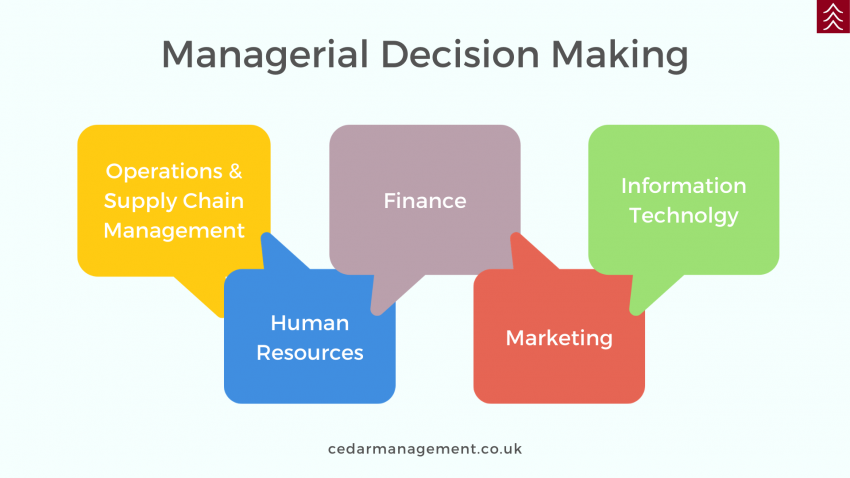What is a problem?
Problem is a mismatch between the current output of existing processes and desired outcomes.
What is the decision-making process?
Decision-making process includes the following steps-
- Identifying the problem
- Setting objectives
- Evaluating the alternatives
- Choosing the best alternative
- Implementing the decision
- Assessing decision effectiveness
Managerial decision-making
Managers at all levels need to make certain decisions; they need to be very meticulous while performing this task. Decisions can be made at individual, group or organisational levels.
Decisions made at the higher or administrative level affect the whole organisation in many ways whereas decisions made at a lower level affect the operations and day-to-day processes. Organisational decisions should be based on the latest information but good managers go beyond a set of numbers to derive insights.
Important decisions that a Supply Chain Manager needs to make are as follows-
- Operations and Supply Chain Management
– decisions related to Supply chain network design, Process improvement, Production efficiencies, Last-mile delivery, Demand forecasting and Quality control.
- Information Technology (IT)
-decisions related to scheduling project milestones, software development, software features & security and decisions related to the organisational data.
- Finance
– Financial Planning & forecasting, Cost structure, Profitability and Expenditure.
- Human Resources Management (HRM)
– Performance assessment, Recruitment planning, Policies & procedures, Project assignment, Allocation of resources, Salary revisions and Employee welfare.
- Marketing
– decisions made for marketing of a product or brand includes a selection of customer & market channels, Packaging formats & designs, Launch plan, media platforms and setting of a budget.
Summary
Good decisions direct organisations towards financial success. Managers should examine and evaluate all alternatives to reach to the best one; implementing the best alternative is also an important step. Constraints, challenges, timeliness and resources must be kept in mind while making a decision. Insights & inputs from stakeholders provide a broad understanding of any problem and available alternatives. Monitoring the effectiveness of a decision as well as the decision-making process helps in getting feedback and making improvements for the future.
